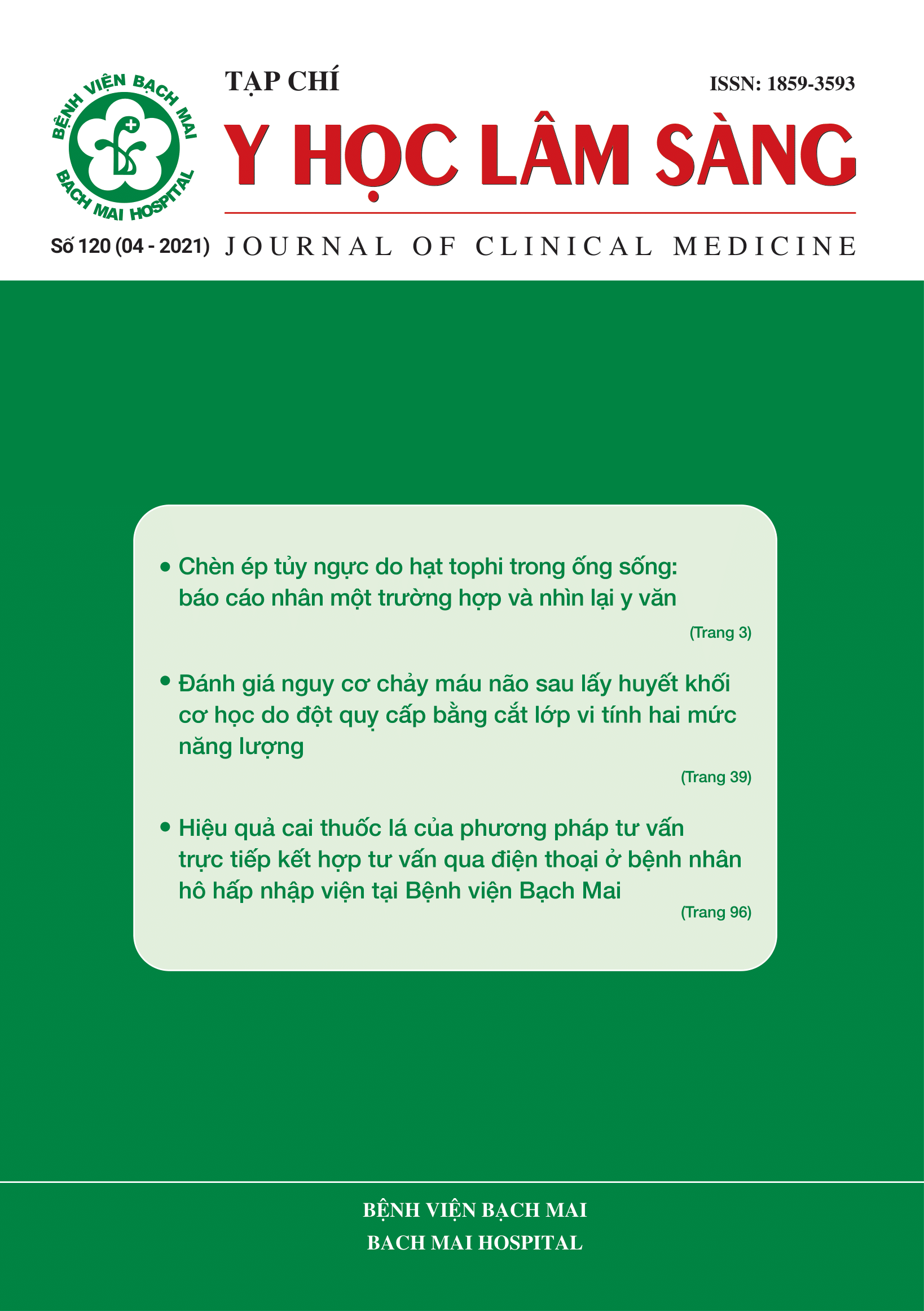Evaluation of the risk of cerebral bleeding following mechanical stroke due to stroke with dual-energy computed tomography
https://doi.org/10.52322/jocmbmh.120.06
Abstract
Objectives: The aim of this study was to assess the capability of iodine extravasation quantification on dual-energy CT to predict hemorrhagic complications after reperfusion therapy for acute ischemic stroke.
Material and Methods: The patients with mechanical thrombectomy for acute ischemic stroke from TICI 2b recanalization, underwent brain dual-energy CT (DECT) within 75 minuties after the treatment. Iodine extravasation concentration was measured to analyze the hemorrhagic risk by using Receiver Operating Characteristic (ROC) curve.
Results: Thirty patients were studied, in which 19 patients developed hemorrhagic transformation (63.3%). Among these, asymptomatic hemorrhage was predominant (14 patients, 46.7%). Three indexes were used to predict hemorrhagic risk including: parenchymal hyperdensity in 120kV images (3.7 times higher than normal), contrast extravasation density more than 60.6HU (22 times higher than normal), and maximum iodine concentration (mg/ml) with cut – off value of 1.1 mg/ml had high sensitivity and specificity (94.7% and 81.8%, respectively).
Conclusion: DECT was a valuable technique in the prediction of hemorrhagic risk after mechanical thomboectomy for acute ischemic stroke.

